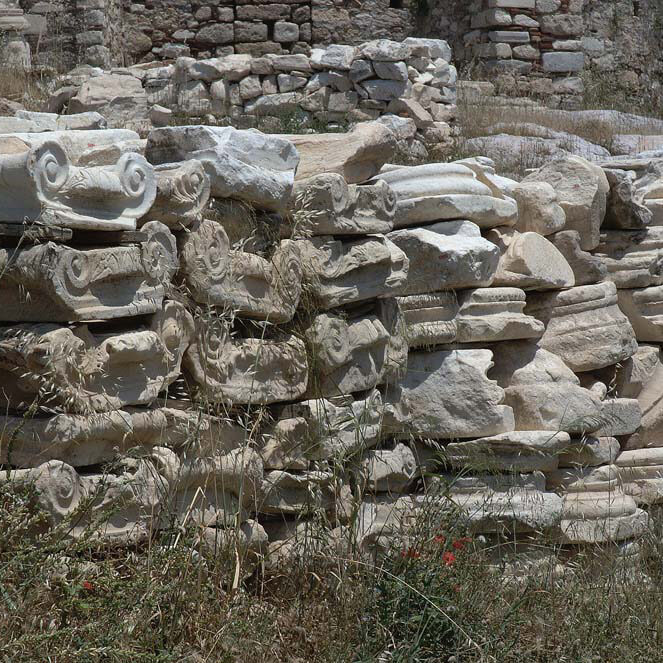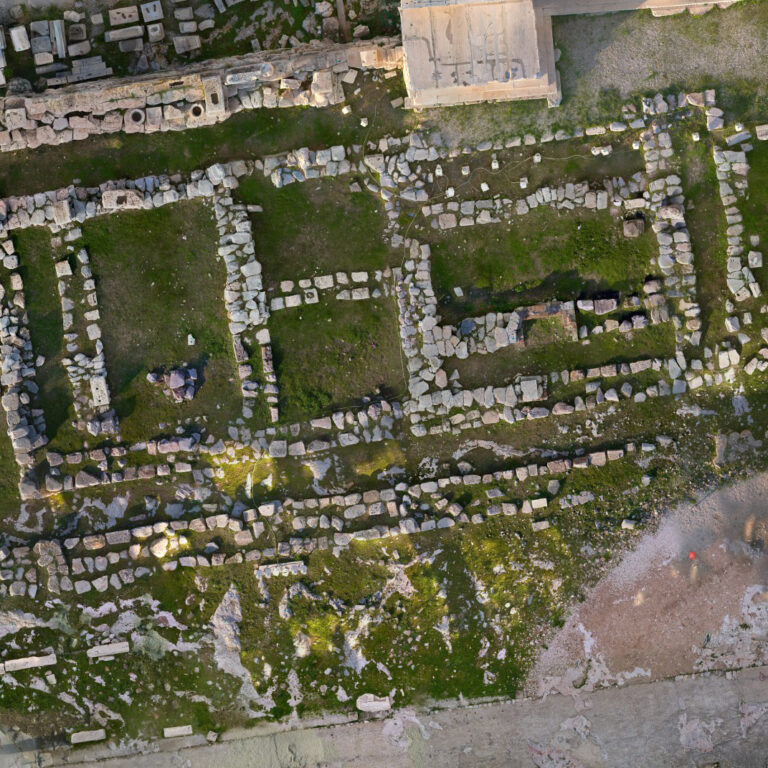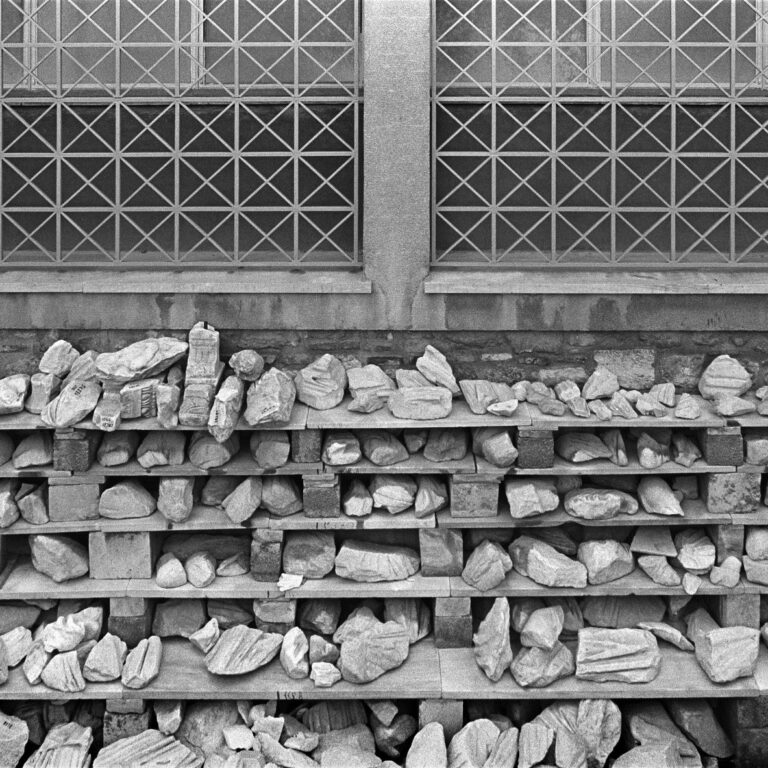
From 1977 to the present, over 20.000 worked pieces, preserved as fragments, and whole members, which lay scattered around the Acropolis monuments or had been collected, as early as the end of the 19th century, in 25 large stone piles at various places on the Sacred Rock, have been recorded, described and photographed and, in special cases, documented with drawings. Over 10,000 pieces without original surface have likewise been recorded and separated from the rest of the material.
Examples of the identification and attribution of some of the scattered members to architectural monuments are the attribution of 197 stones to the Parthenon, 65 to the Propylaia, 4 to the Erechtheion, 91 to the pre-Parthenon, 30 to the so-called Urparthenon, 500 to the “Old Temple”, 64 to the Stoa of Eumenes, 7 to the stoas of the Asklepieion and 3 to the Odeion of Herodes Atticus, between 1995 and today. Among the sculptural fragments that have been joined is a fragment belonging to the back of the horse of the Persian Horseman, which has restored the length of the horse along the spine.
Included also in the work on the Scattered Members of the Acropolis is the recording and description of ancient stones from the Old National Printing Press and the Arsakeion. 128 fragments were found built into the walls of the first as re-used material. These were taken out and transferred to the Acropolis where they were listed. The importance of this operation is evident from the fact that, among other things, 27 of the fragments belonged to the Parthenon. After the plaster was removed from the exterior of the Arsakeion, it was evident that ancient material from the Acropolis monuments had been used extensively. Photographs to scale were made of 482 stones, after careful cleaning of the visible surfaces and circumferential joints.
By 2007 works concerning the dismantling and recording of nearly all the piles of marble blocks from the Acropolis had been completed; since 2008 the programme has focused on recording, classifying, surveying, designing and storing the poros architectural members found on the Acropolis. Six hundred and three poros architectural members, completely catalogued and archived, were transferred for protection to the “Belvedere” storeroom while the study of about 850 fragments and the identification of 117 brought forth of 51 unknown architectural members from archaic buildings of the 6th century BC. Suitable mortar, designed by the Laboratory of Materials for Cultural Heritage and Modern Building of the Technical University of Crete, was used for binding fragments of the same architectural member.
A special case was the restoration of an archaic triglyph (index number 21432), consisting of ten fragments, which had been previously restored with inappropriate materials. The fragments were dismantled, the earlier used materials were removed and six new fillings, carved in Piraeus Actitis stone, were bound on the ancient fragments. Reinforced titanium was placed in the mortise holes made during the previous restoration.
New approaches to matters concerning both the morphology of the “Hekatompedon”, the first monumental temple of the Athenian Acropolis, built in about 570 BC, and topographical issues of the Archaic Acropolis, stemmed from new identifications of architectural members and fragments that belong to them as well as from new observations on previously identified members. These works were documented through drawings This new study allowed the creation of a tree-dimensional drawing of the Archaic Parthenon, while existing publications were used for a similar drawing of the Old Temple of Athena Polias.
Works done in the area of the Arrephorion revealed a pile of blocks that were recorded, documented and classified within the framework of NSRF 2011-2015. Accordingly, these blocks were organised in piles and placed on the north of the old Museum and on the east and north of the Propylaia; Moreover about 800 scattered architectural members had to be moved and arranged on new piles, in order to assist the restoration works. Another on-going project concentrates on enhancing the area of the Chalkotheke where about 230 architectural members have been noted on the topographical plan and numbered.




